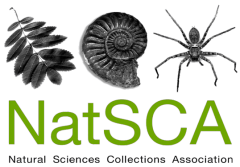Two generations of the Musgrave family of Edenhall near Penrith, in what was then Cumberland, assembled a collection of bird and mammal taxidermy between about 1830 and 1880. When the estate was sold in the 1920’s, a substantial part of this material was donated to Tullie House Museum and Art Gallery in Carlisle where it forms part of the Museum’s taxidermy collection. The bulk of the latter collection originated from specimens donated by naturalists but the Edenhall material is unusual in that it was created by people who were primarily sportsmen rather than true naturalists. This paper describes the composition and geographical origins of the Edenhall Collection based on a catalogue prepared by Museum staff at the time it was donated to the Museum. In total the Edenhall Collection comprised 154 specimens of 111 species of bird and 15 specimens of 10 species of mammal. Of those for which the locality was recorded, the majority had been obtained in Cumberland with a lesser but still significant proportion from Caithness in the north of Scotland, together with a small number from other areas. Around 38% of the bird specimens, however, were of unknown provenance but most were probably from Cumberland. Birds of prey and quarry species were well represented and so too were ardeids (herons, bitterns and egrets); by contrast small birds, mainly passerines, were under-represented. The collection also contained a number of locally-taken rarities, notably Honey-buzzard Pernis apivorus (Linnaeus, 1758) and Two-barred Crossbill Loxia leucoptera Gmelin, 1789, as well as the first Lakeland records of Purple Heron Ardea purpurea Linnaeus, 1766 and Squacco Heron Ardeola ralloides (Scopoli, 1769). Overall, about a half of all the bird species represented were those with small local populations and which were therefore most at risk from shooting and associated pursuits.
